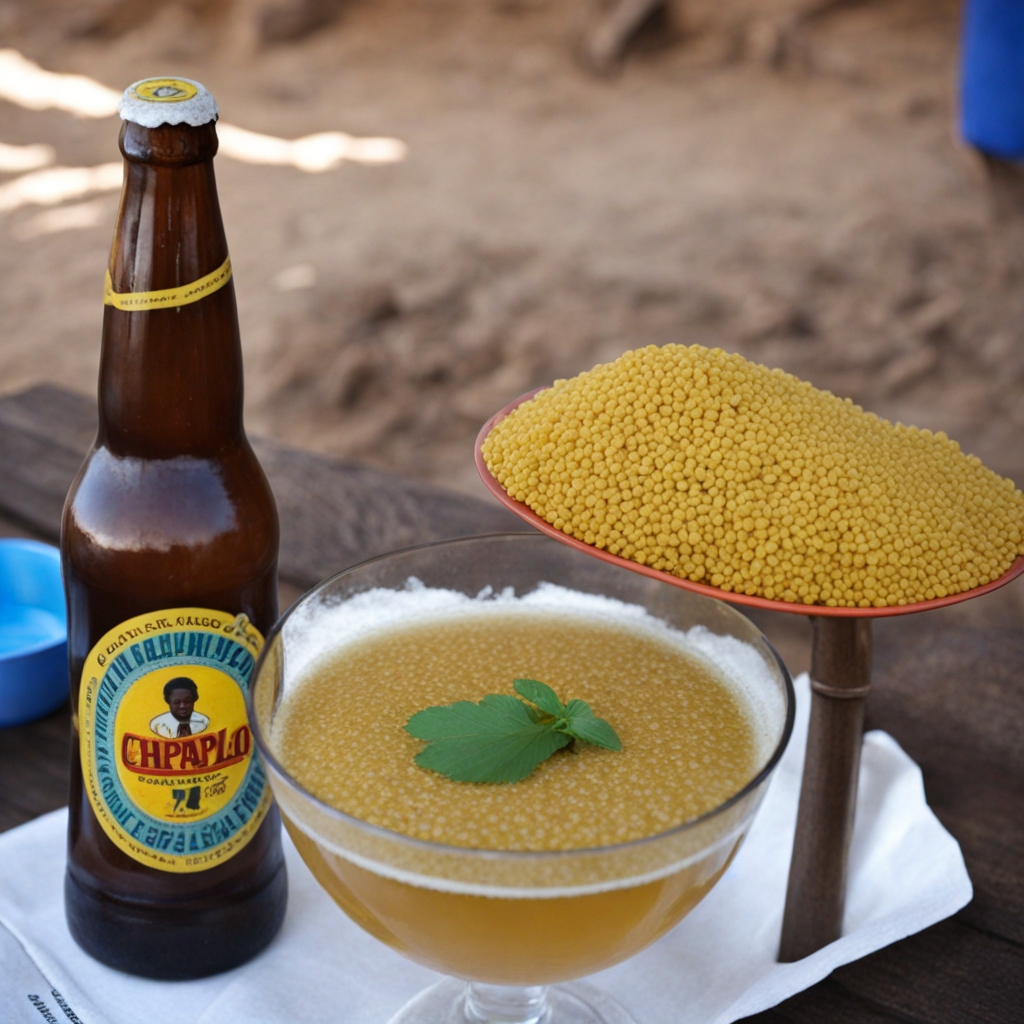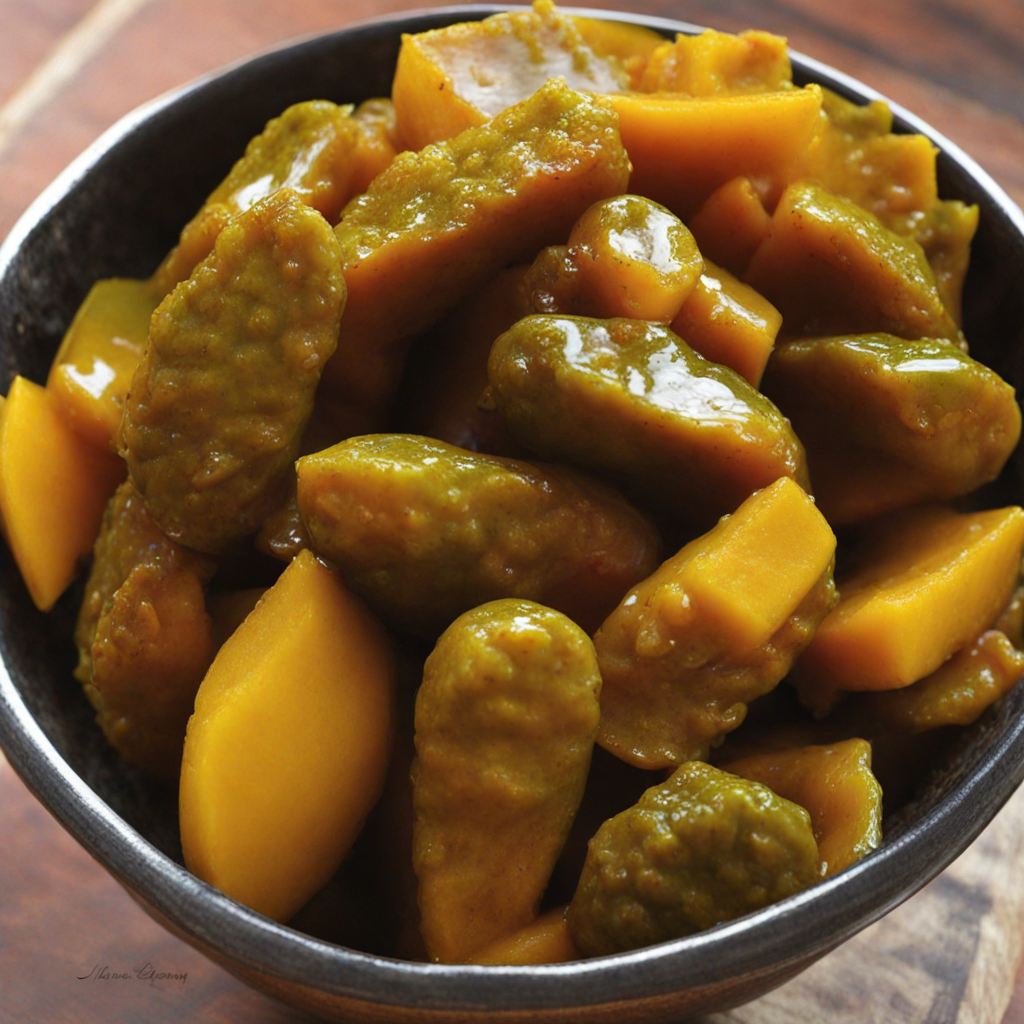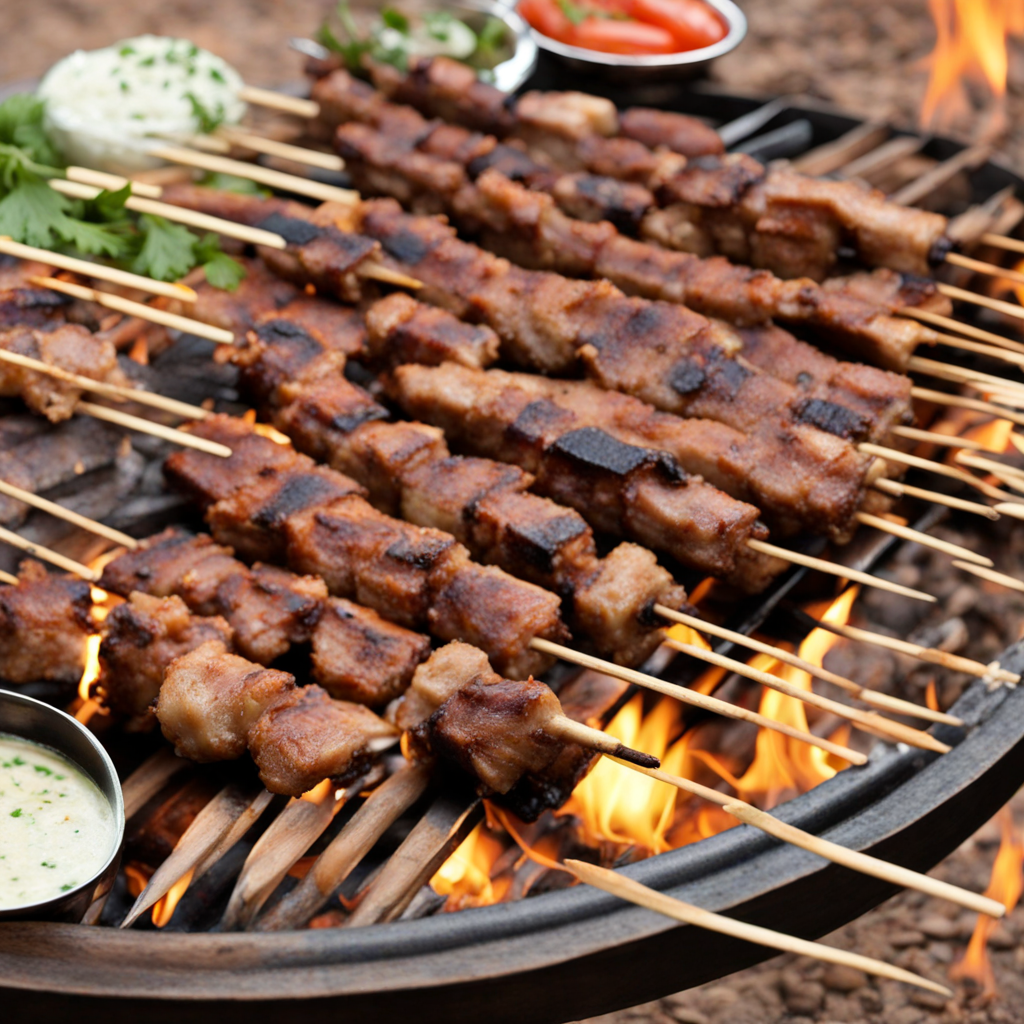Chapalo
Chapalo is a traditional dish from Burkina Faso, celebrated for its simplicity and rich flavors. This delightful meal primarily features a base of fermented maize dough, which is skillfully shaped into small dumplings. The dough is often infused with spices and sometimes mixed with groundnuts, adding a nutty depth to the flavor. The dumplings are then typically steamed or boiled, resulting in a soft, slightly chewy texture that is both satisfying and comforting. Complementing the dumplings is a vibrant sauce made from a medley of local vegetables, such as tomatoes, onions, and leafy greens, often enhanced with a variety of spices and seasonings. The sauce can vary in heat and flavor, depending on the cook's preference, but it usually brings a delightful balance of tanginess and earthiness that elevates the dish. Many versions of Chapalo include protein, such as fish or chicken, which adds a savory richness to the meal, making it not only nourishing but also a feast for the senses. When served, Chapalo is often enjoyed communal-style, where diners gather around a shared platter, scooping up the dumplings with their hands and pairing them with the flavorful sauce. This creates a warm, inviting atmosphere that reflects the communal spirit of Burkinabé culture. Each bite offers a unique experience, combining the soft texture of the dumplings with the vibrant, spicy sauce, making Chapalo a must-try for anyone eager to explore the diverse and delicious culinary landscape of Burkina Faso.
How It Became This Dish
The History of Chapalo: A Culinary Treasure of Burkina Faso Introduction Chapalo, a beloved dish from Burkina Faso, embodies the rich tapestry of the nation’s culinary heritage. This traditional meal, primarily composed of ground millet or sorghum, is a testament to the agricultural practices, cultural values, and communal spirit of the Burkinabé people. To appreciate chapalo fully, it is essential to explore its origins, cultural significance, and its development over time. Origins of Chapalo The roots of chapalo can be traced back to the ancient agrarian societies of West Africa. Millet and sorghum have been cultivated in this region for thousands of years, serving as staple grains for various ethnic groups. Archaeological evidence indicates that millet farming began in the Sahel region, which includes present-day Burkina Faso, around 2000 BC. As these grains became integral to the local diet, they were transformed into various dishes, with chapalo emerging as a favored preparation. Chapalo's name is believed to derive from the word "chapa," which means "to grind" in the local languages. This reflects the traditional method of preparing the dish, which involves grinding the grains into a fine flour before cooking. Historically, women would gather to grind the millet or sorghum using large stones, fostering community bonds and transmitting culinary knowledge across generations. Cultural Significance In Burkina Faso, food is more than sustenance; it is a reflection of identity, tradition, and community. Chapalo holds a special place in the hearts of the Burkinabé people, symbolizing hospitality and togetherness. The dish is often prepared for significant occasions, such as weddings, festivals, and communal gatherings, reinforcing social ties and cultural values. The preparation of chapalo is a communal affair. Families and friends often come together to share in the labor of grinding the grains, cooking, and serving the meal. This collective effort highlights the importance of community in Burkinabé culture, where sharing food is seen as a way to strengthen relationships and foster unity. Moreover, chapalo is frequently accompanied by a variety of sauces and side dishes, such as groundnut sauce or vegetable stews, further enriching the culinary experience. These accompaniments vary by region and family tradition, showcasing the diversity of flavors and ingredients available in Burkina Faso. The dish's versatility allows it to adapt to different tastes and preferences, making it a staple in numerous households. Development Over Time As Burkina Faso has evolved, so too has chapalo. The dish has undergone various transformations, influenced by factors such as globalization, urbanization, and the changing dynamics of food production. While traditionally made from locally sourced grains, contemporary versions of chapalo may incorporate ingredients inspired by global cuisine, reflecting the broader culinary trends present in urban areas. The introduction of mechanized grinding processes and modern cooking appliances has also altered the preparation of chapalo. In rural communities, traditional methods still prevail, but urban dwellers may opt for convenience, using pre-packaged flours or fast-cooking techniques. This shift has sparked a dialogue about authenticity and the preservation of culinary traditions, with some advocating for the maintenance of traditional practices while others embrace innovation. Despite these changes, the essence of chapalo remains intact. The dish continues to be a source of pride for the Burkinabé, symbolizing resilience and adaptability. It serves as a reminder of the importance of cherishing one’s culinary roots while also embracing new influences. Global Recognition and the Future of Chapalo In recent years, there has been a growing interest in African cuisines on the global stage, with chefs and food enthusiasts exploring the rich culinary traditions of the continent. Chapalo has begun to gain recognition outside Burkina Faso, celebrated for its wholesome ingredients and communal spirit. Food festivals, cultural exchanges, and culinary tourism have played a significant role in showcasing chapalo to international audiences. These platforms allow Burkinabé chefs to share their knowledge and passion for traditional dishes, fostering a greater appreciation for the country’s culinary heritage. As awareness of chapalo increases, there is a renewed emphasis on sustainable agriculture and the importance of preserving traditional farming practices. Initiatives aimed at supporting local farmers and promoting the use of indigenous grains are gaining traction, ensuring that future generations can continue to enjoy chapalo in its authentic form. Conclusion Chapalo is more than just a dish; it is a cultural artifact that encapsulates the history, values, and communal spirit of Burkina Faso. From its ancient origins rooted in agrarian practices to its contemporary adaptations influenced by global trends, chapalo remains a beloved staple in Burkinabé cuisine. As the world becomes more interconnected, chapalo serves as a bridge between cultures, inviting people to explore the rich flavors and traditions of Burkina Faso. The dish embodies the resilience of a people who have navigated challenges while holding steadfast to their culinary heritage. As we look to the future, chapalo stands as a testament to the power of food to connect us, nourish us, and tell the stories of our shared humanity.
You may like
Discover local flavors from Burkina Faso







